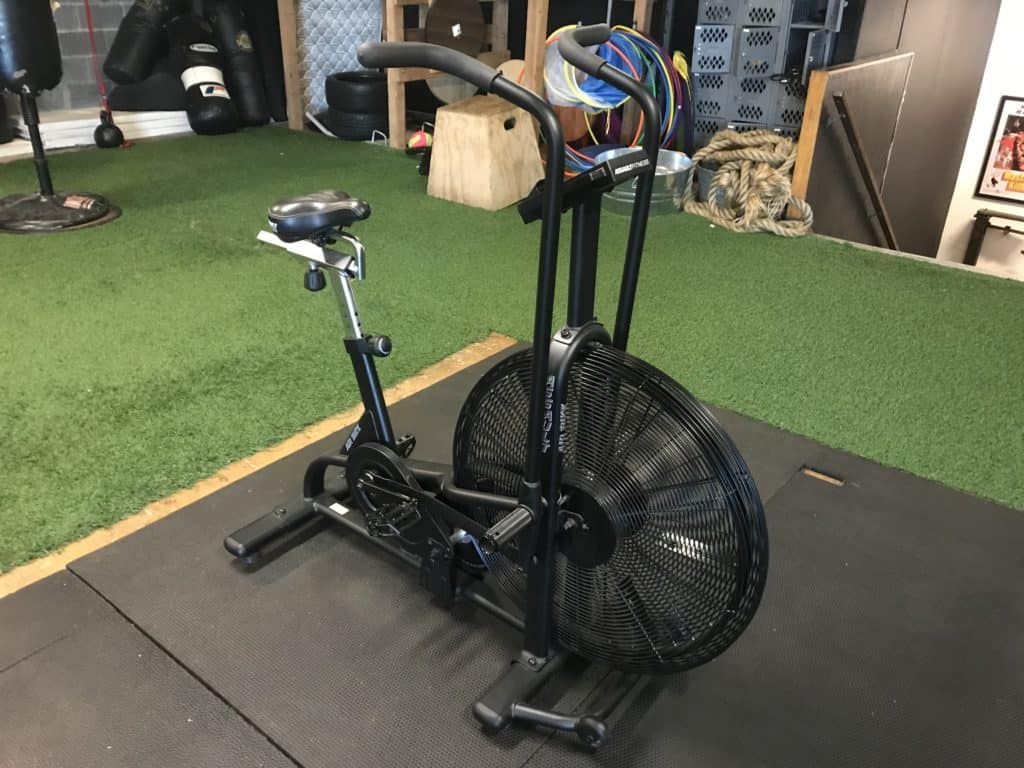
One of my most popular articles was about roadwork for mixed martial arts, and many of the ideas discussed also apply to Brazilian Jiu Jitsu. The basic premise of the article is that running is an overrated cardio modality for MMA since there is no actual running in MMA. It’s more appropriate for something like soccer or even basketball.
Sometimes strength and conditioning coaches get so lost in the weeds that they miss the overarching principles of the sport. Yes, running can get you into better shape and give a boost to your overall cardiovascular health. But there are far more appropriate measures to improve endurance on the mat.
You may have seen new students come into your class who look to be in good physical condition, only to get gassed halfway through the warmup. Does this mean they’re not in shape? Not quite, it just means they’re not in jiu jitsu shape.
Jiu jitsu is a unique sport that utilizes aspects of anaerobic training (high intensity), but often over a long period of time (multiple rolls of 6+ minutes with no rest in between). This makes it both anaerobic and aerobic.
In addition it’s the only sport that is contested on the ground as much, if not more often than it is on the feet. It is a true full body experience, utilizing upper body, core, and leg strength.
With all these factors in place, it’s easy to see why running isn’t the best option to base your conditioning program around. It can be a part of it, but not something you’d do every day. Improving your 5k time isn’t really going to help you in scrambles or maintain a squeeze on an arm triangle.
You could argue that your arms and core are far more likely to get fatigued during a roll than your legs. As a result, it’s important to choose a cardio type that taxes the upper body just as much as the lower body.

Airdyne Bike
An airdyne bike is one of the best cardio machines you can use for jiu jitsu endurance. It’s set up like a stationary bike but with handles that pump back and forth. Unlike an elliptical, the handles provide a great deal of resistance and you also don’t look silly using it at full speed. You could even put your feet up and use the handles on their own for a shoulder workout.
The airdyne is perfect for high intensity interval training due to the nature of how the machine works. The harder you pedal, the greater the resistance, so you don’t have to worry about fiddling with buttons during your workout. The resistance is from the wind generated by the large wheel in the front of the bike.
As a result, the bike is suitable for all ability levels since the user dictates the pace.
A good program would be alternating between 1 minute at low intensity with 1 minute at high intensity for however long you typically roll for. For example, if you roll for 8 minutes, you would perform that rotation 4 times.
The assault bike is the gold standard. I’m lucky that my gym has two of them, but I know this is a rarity. You can get your own here if you’re looking to invest in a home gym or add one to your academy.
Rower
While the airdyne utilizes the upper body’s pushing muscles (chest, triceps, and shoulders), the rower utilizes the upper body’s pulling muscles (biceps and back). Combining both creates balance in your workout program. On the rower, the user’s feet are strapped in while they sit on a small seat that glides on a track.
This is an appropriate exercise for jiu jitsu practitioners since you are seated the whole time. Jiu jitsu is the one sport which uses this seated position quite a bit, particularly if you are someone who likes to play butterfly guard.
Similar to the airdyne, the rower’s resistance is dictated by the individual. It too has a rotating wheel in front, which gains resistance the harder you row.
The structure of the workout program can also be similar to the airdyne high intensity interval training; one minute at high intensity followed by one minute at low.
You could also alternate between the two machines if the gym has both within a reasonable distance. In this instance, the low intensity portion would be the transition from one machine to the next (as it takes time to strap in and out of the rower). Once you get on either machine you would immediately start the one minute high intensity interval.
Battle Ropes
Out of all the cardio modalities in this list, you could argue battle ropes are the most sport specific exercise related to jiu jitsu. The motion you choose when using the ropes could mimic snap downs, pummeling, or even throws. But my favorite aspect of the battle ropes is the development of grip strength.
In the case of a jiu jitsu athlete, the battle ropes should be as thick as possible near the grip area. The cheaper versions are too thin to really tax your grip. Make sure to use the thickest ropes you can find.
Grip strength is critical in jiu jitsu, but training for improved grip can be limited. Farmers walks can develop grip strength, but the exercise doesn’t really translate to grappling. You don’t grapple with your hands at your side walking around a gym. Pullups with a towel do the same, but again your arms are in a fixed position above your head.
With battle ropes, there are tons of different movement variations you could perform. The ropes are a free range instrument that move in all planes. They are heavy enough to stimulate the muscle but not too heavy where the movement would cause pain or injury.
The ropes typically come in two sizes, 1.5 or 2 inches in diameter. For the purpose of improving grip strength and cardiovascular endurance for jiu jitsu, try to get the 2 inch variety.
The way you use the battle ropes is different than the way you use the airdyne or rower. You can still do high intensity intervals, but during the low intensity portion you would just rest. Due to the free movement of the ropes, you can truly go all out on the high intensity portion of the workout. You can’t truly go all out on the airdyne or rower as you pose the risk of falling off.
As a result, the high intensity interval may have to be a bit shorter. Rather than going for a minute, you may have to drop it to 20-30 seconds.
It’s also important to remember that the workout guidelines posed here are just recommendations. There are many different ways to structure cardio interval workouts. Based on the nature and length of time involved with rolling and jiu jitsu competitions, this is a good foundation to get started. Feel free to adjust based on your needs.
